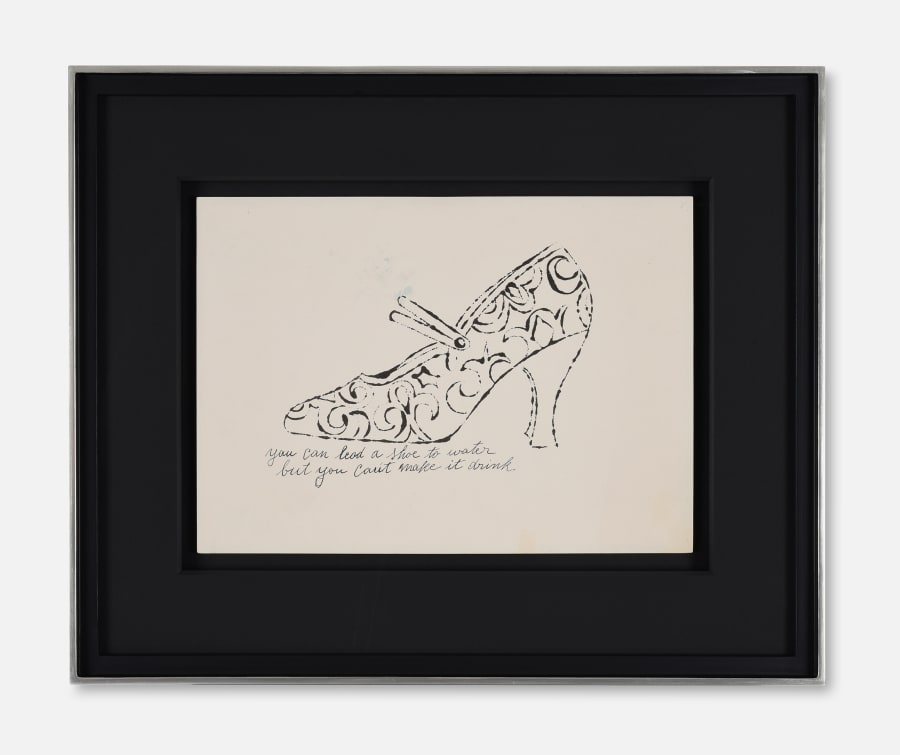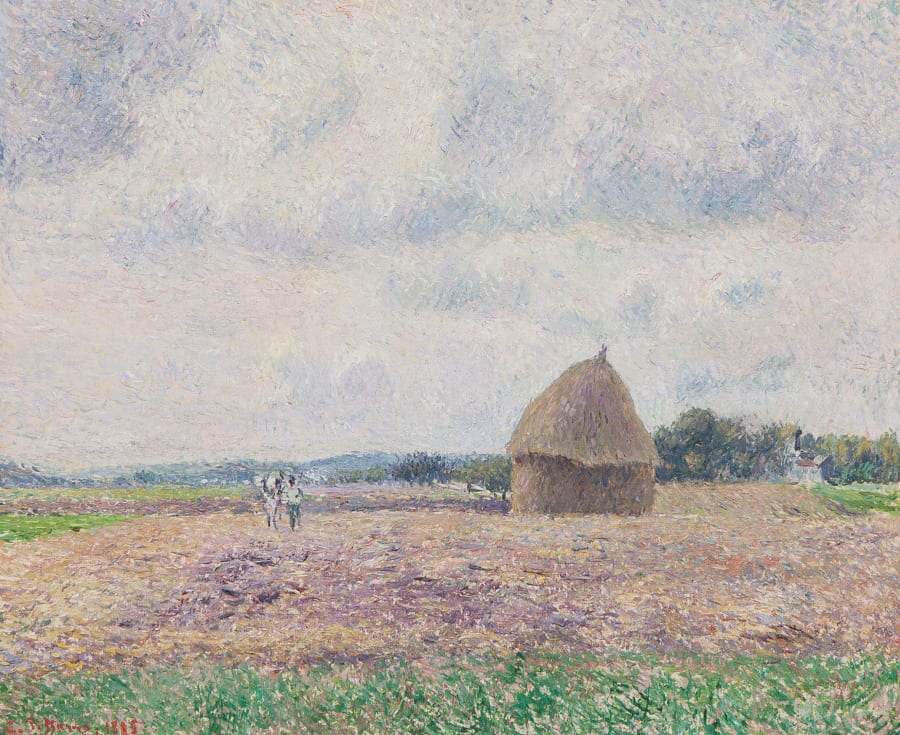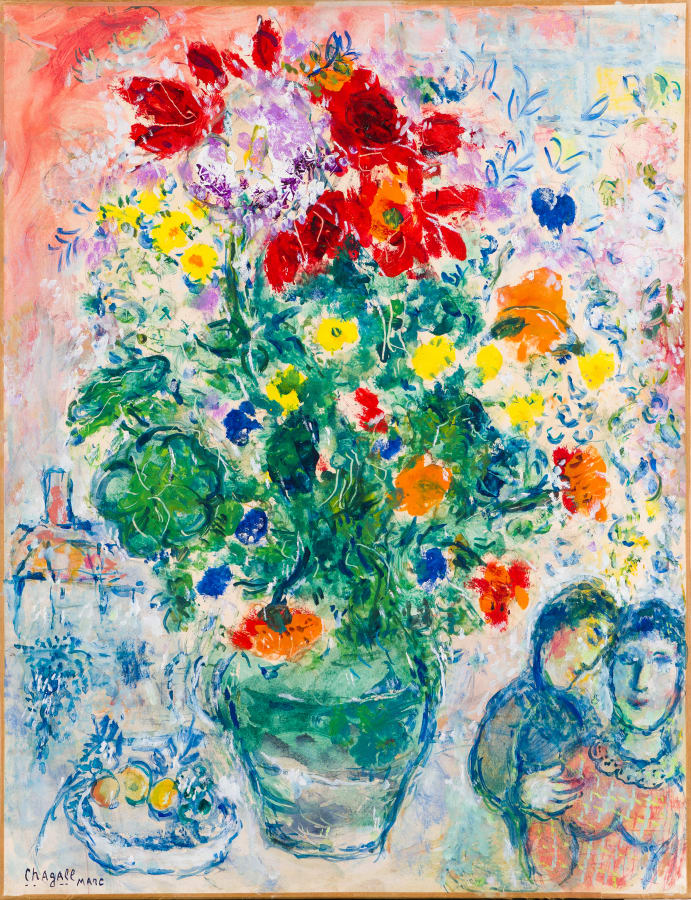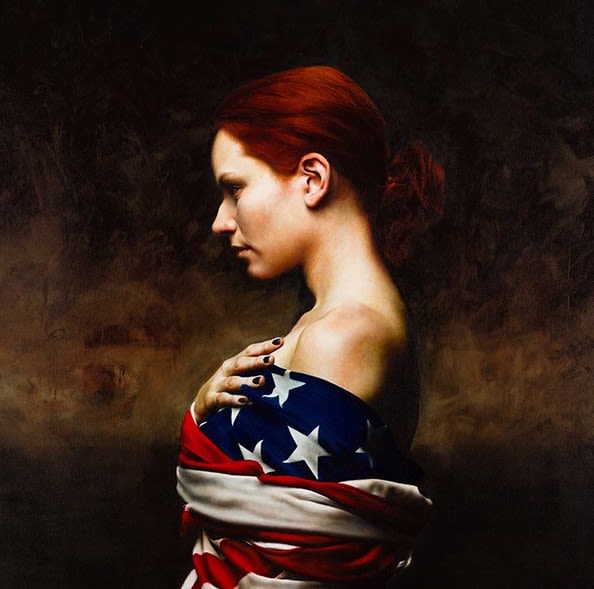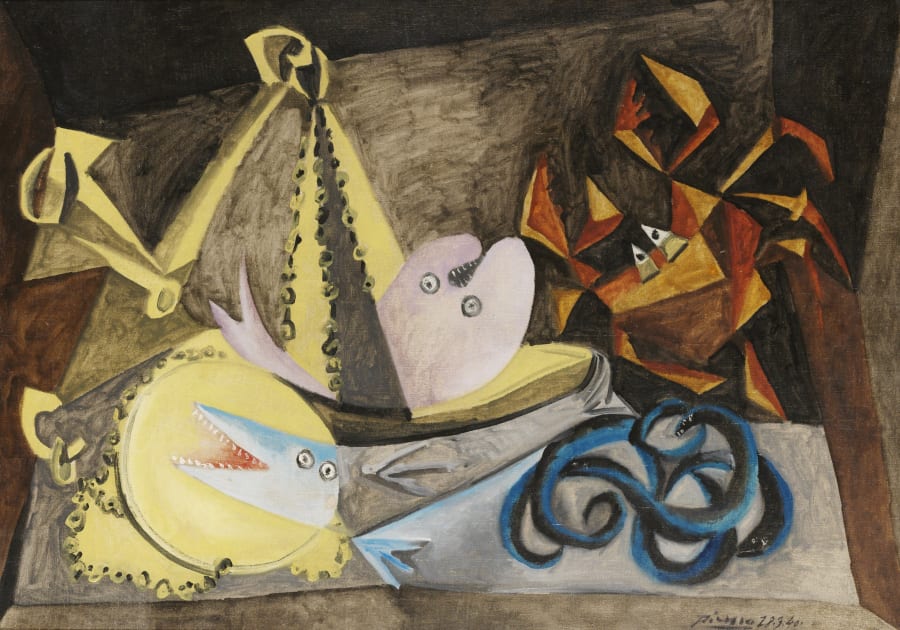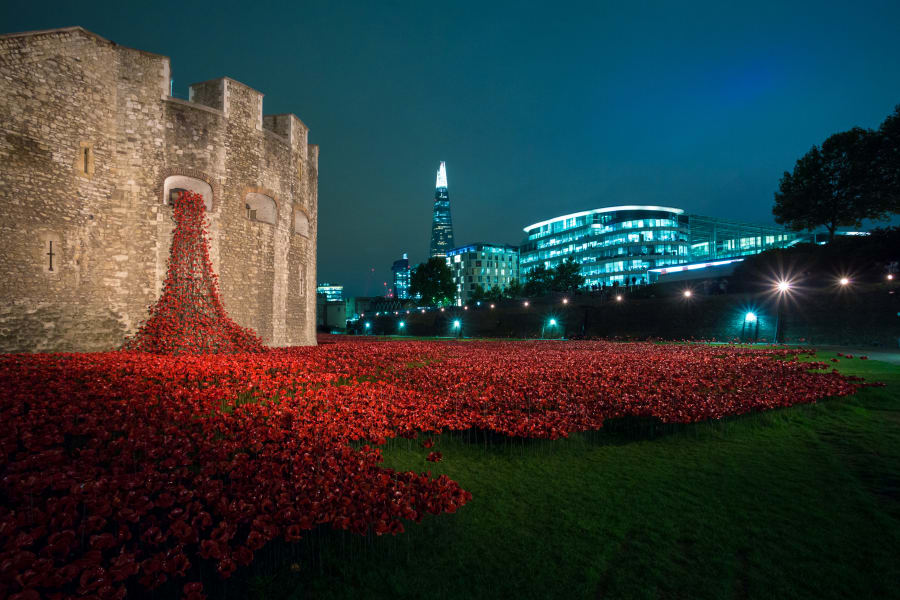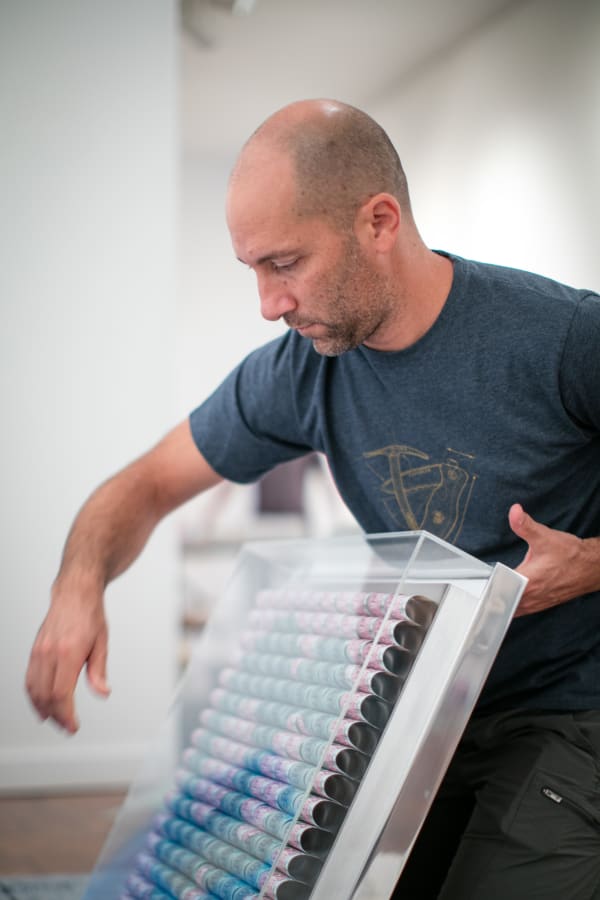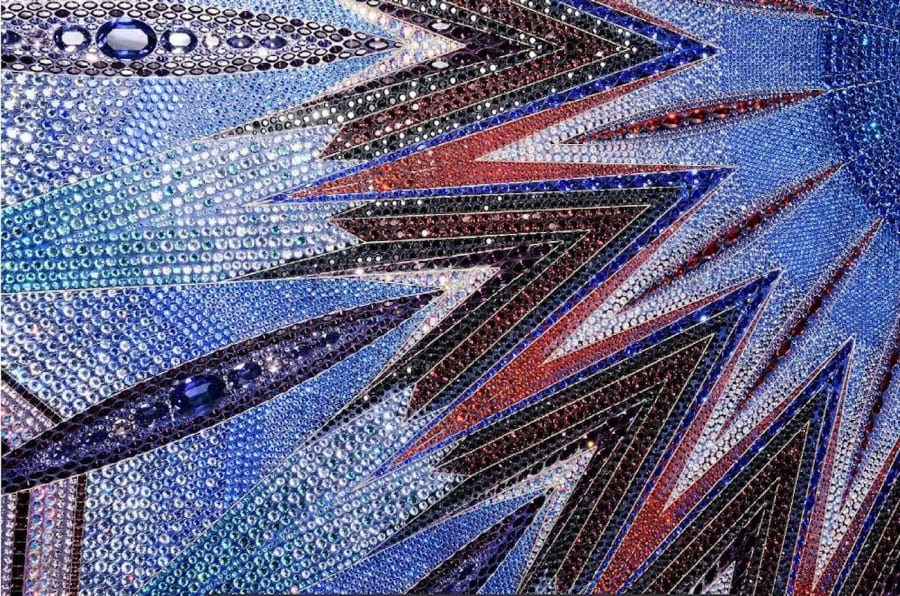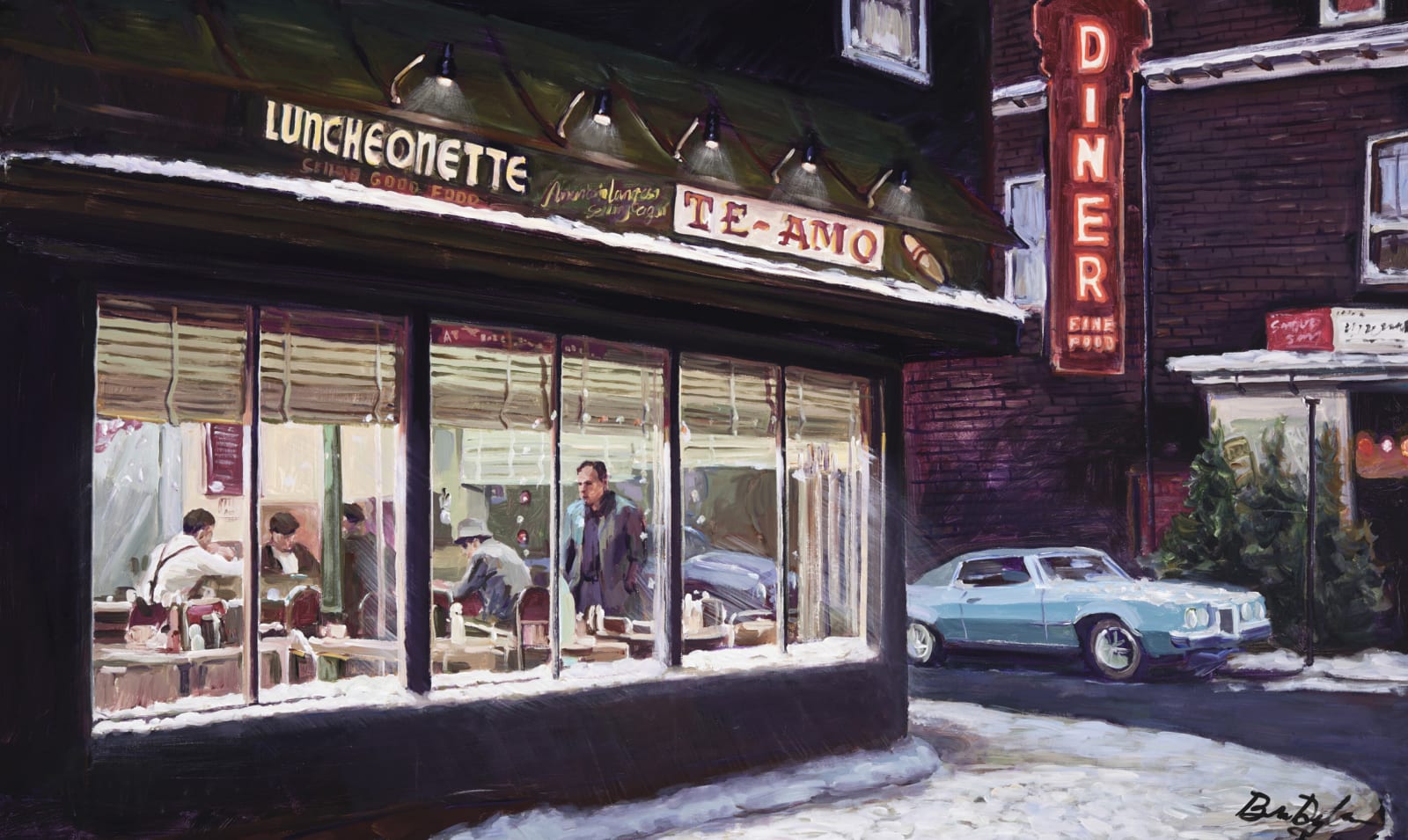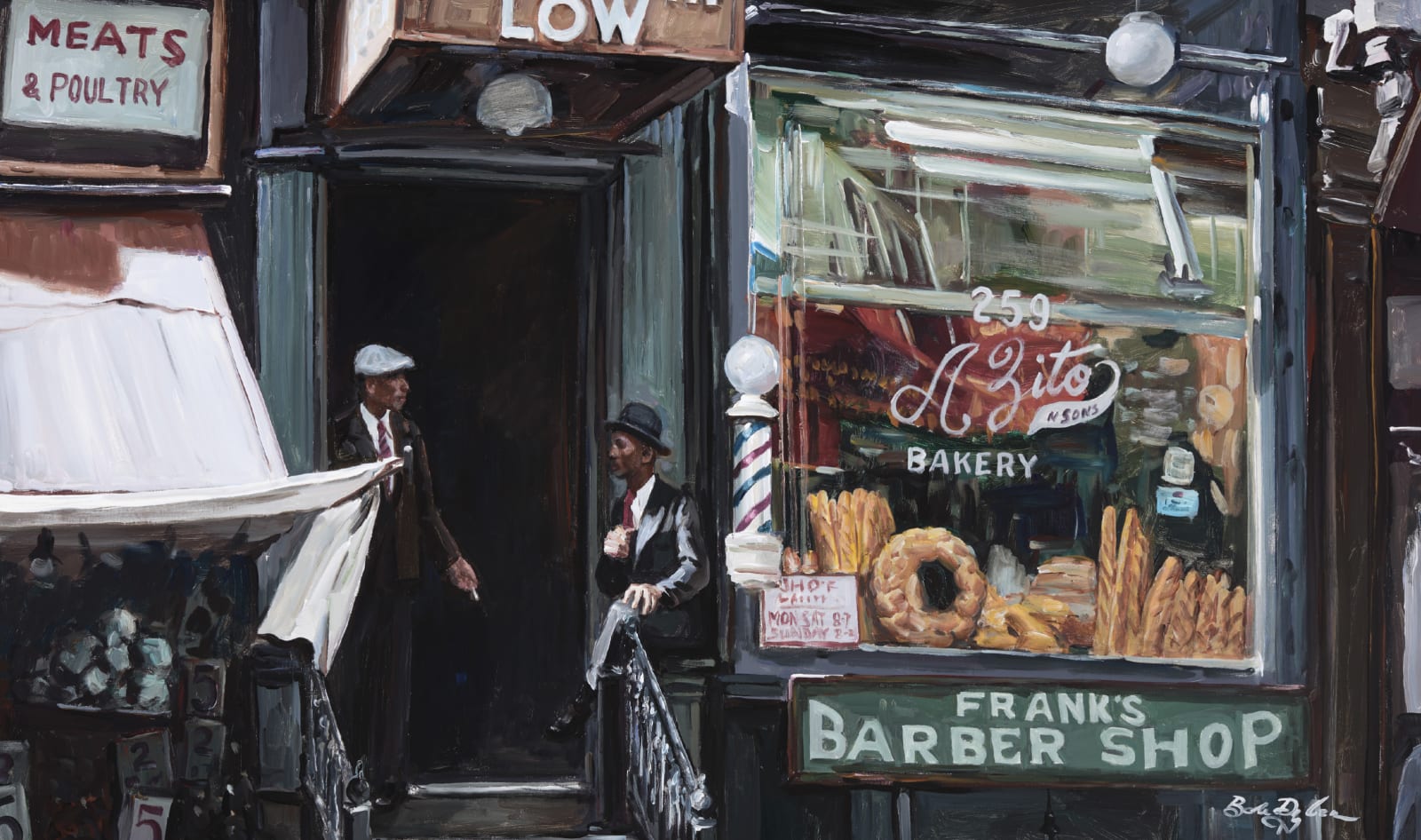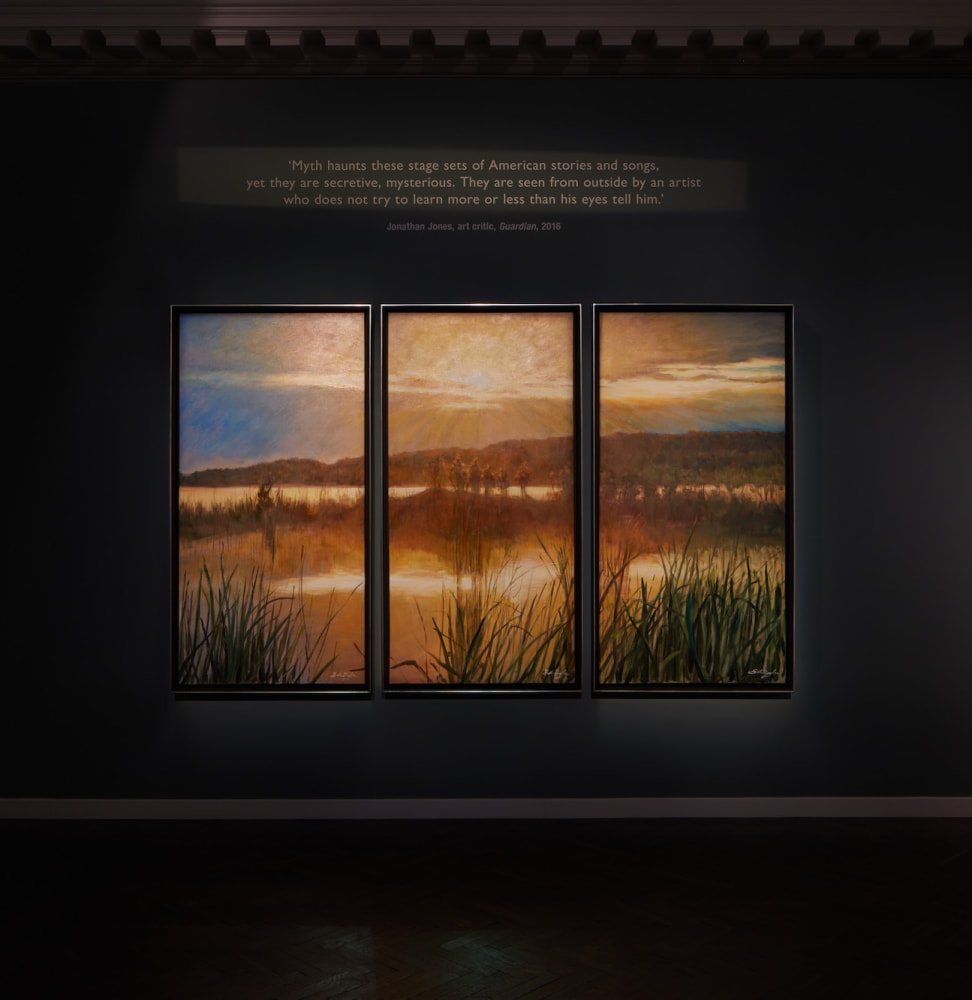Andy Warhol
American, 1928-1987
Andy Warhol pioneered the Pop art movement and coined the iconic phrase ‘once you “got” Pop, you could never see a sign the same way again. And once you “thought” Pop, you could never see America the same way again.’ Pop art – a movement that emerged in the 1950s and proliferated in the 1960s across the United Kingdom and United States – marked a radical shift in modern art, challenging traditional distinctions in high and low culture. Warhol’s contributions to art have led many to laud him as one of the 20th century’s greatest successes. His remarkable career paved the way for future generations, and the existence of ‘The Factory’, which celebrated and supported countless artists – many of whom went on to become great artists in their own right – cemented his legacy as deeply altruistic. Despite his modest beginnings, Warhol’s rise to artist-celebrity assumes his determination and integrity. Now a household name, Warhol continues to evolve and inspire beyond the grave.
Warhol was born on August 6, 1928, as Andrew Warhola to poor Slovak immigrants in Pittsburgh, Pennsylvania. At the age of 8, he contracted Chorea, a disorder causing involuntary movements, which left him bedridden for many months. Despite this, it was during this time that his mother, a talented draughtswoman and calligrapher, taught him how to draw. His father, Andrej, a coalmine worker, passed away when Andy was 13 due to complications from a work-related accident. Before his death, Andrej recognised Andy's talent and set aside funds for his college education, telling his other son, John, ‘You are going to be proud of Andy someday.’ From 1945 to 1949, Warhol studied pictorial design at the Carnegie Institute of Technology in Pittsburgh before moving to New York. There, he worked as an illustrator for magazines like Vogue and Harper's Bazaar and created advertisements and window displays. By the 1950s, he had become one of New York's most successful commercial illustrators, known for his ‘blotted line’ shoe illustrations for I. Miller. In 1952, he had his first solo exhibition at the Hugo Gallery in New York.
Influenced by his encounters with Jasper Johns and Robert Rauschenberg, Warhol worked increasingly to establish himself as a serious painter. His first Pop art paintings, created from 1960 onwards, incorporated cartoon and advertising imagery, while he parodied the self-conscious brushwork of the Abstract Expressionists.
Warhol appropriated subjects from popular culture, newspapers and consumer products, adopting a minimalist, inexpressive style that challenged notions of what art could be.
In 1962, Warhol achieved the notoriety he sought by exhibiting paintings of rows of Campbell’s soup cans and Coca-Cola bottles. He wrote, 'what's great about this country, is that America started the tradition where the richest consumers buy essentially the same things as the poorest. You can be watching TV and see Coca-Cola, and you can know that the President drinks Coke, Liz Taylor drinks Coke, and just think, you can drink Coke, too.' Admiring the levelling effects of industrialisation, he added: 'I think everybody should be a machine. I think everybody should be like everybody. That seems to be what is happening now.' That same year, Warhol founded ‘The Factory’, where he could depict massed ranks of goods using the repetition offered by screen printing. In this art studio, assistants carried out much of the work under his supervision, distancing him further from the traditional artist's role.
From 1963 Warhol began experimenting with film, and by 1968 he had made more than 60 films and over 500 short black-and-white portrait clips of visitors to The Factory. 'Underground' works such as Sleep (1963) and Empire (1964) are reflective of Warhol's impersonal approach, largely using improvised dialogue, documenting erotic acts and generally lacking a plot.
After surviving an assassination attempt in June 1968, Warhol handed over film making for The Factory collective to his assistant director. Throughout the 1960s and 1970s, Warhol produced portrait prints of celebrities, including Hollywood stars, rock musicians, fashion designers, artists and political leaders, including Marilyn Monroe, Brigitte Bardot, Elvis Presley, Mick Jagger, Michael Jackson and Chairman Mao. In the book American Visions (1997), Time magazine art critic Robert Hughes described Warhol as 'a conduit for a sort of collective American state of mind in which celebrity - the famous image of a person, the famous brand name - had completely replaced both sacredness and solidity'.
During these decades, Warhol’s creative projects extended into new arenas. In 1969 he co-founded Interview magazine and authored The Philosophy of Andy Warhol (1975). Further publishing ventures included Portraits of the Seventies (1979), Andy Warhol's Exposures (1979) and POPism: The Warhol Sixties (1980).
Among the most experimental of his later pieces are two ventures into virtual abstraction. Shadows (1979) is a sequence of 102 screenprints from an enlarged photograph of a diagonal shadow cast by a painting in Warhol's studio. More radical in its execution was the Oxidation series (1978), where Warhol and his assistants prepared canvases by covering them with copper paint and then urinating on them, creating elegant iridescent designs in yellow, orange and green. This approach wryly subverted the random drip techniques used by Abstract Expressionists such as Jackson Pollock.
Warhol ran two television shows in the 1980s and worked in collaboration with various younger American and European artists, including Jean-Michel Basquiat, Keith Haring and Francesco Clemente. In 1984, in response to a commission for a series based on The Last Supper, Warhol returned to hand painting – something he had not done since 1965 when he publicly announced he was ‘retiring from painting’ to focus on films. Between 1984 and 1986, Warhol created over 100 renditions of The Last Supper, some tinted in yellow, pink or blue and others featuring vast canvases where Christ and his disciples are overlaid with brand names, doves and motorbikes. As a devout Eastern-rite Catholic, Warhol’s life was deeply connected to church imagery. Whether his canvases were sacrilegious, ironically detached, or an attempt to merge his faith with the material world, is ambiguous.
Warhol died in New York on 22 February 1987 and was buried in Pittsburgh. A memorial mass held at St. Patrick's Cathedral, New York, was attended by more than 2,000 people. Two museums are dedicated to his work, in Slovakia and Pittsburgh. There is also an Andy Warhol Foundation for the Visual Arts, which, in accordance with his wishes, uses proceeds from his estate and continues to ‘foster innovative artistic expression and the creative process.’ Warhol’s celebration of capitalism, mass production and celebrity changed the course of art history. His approach paved the way for a new generation of artists to explore themes that were previously considered unworthy of fine art. He blurred the line between the aesthetics of commercial art and fine art, with a legacy that continues to inspire artists today.
